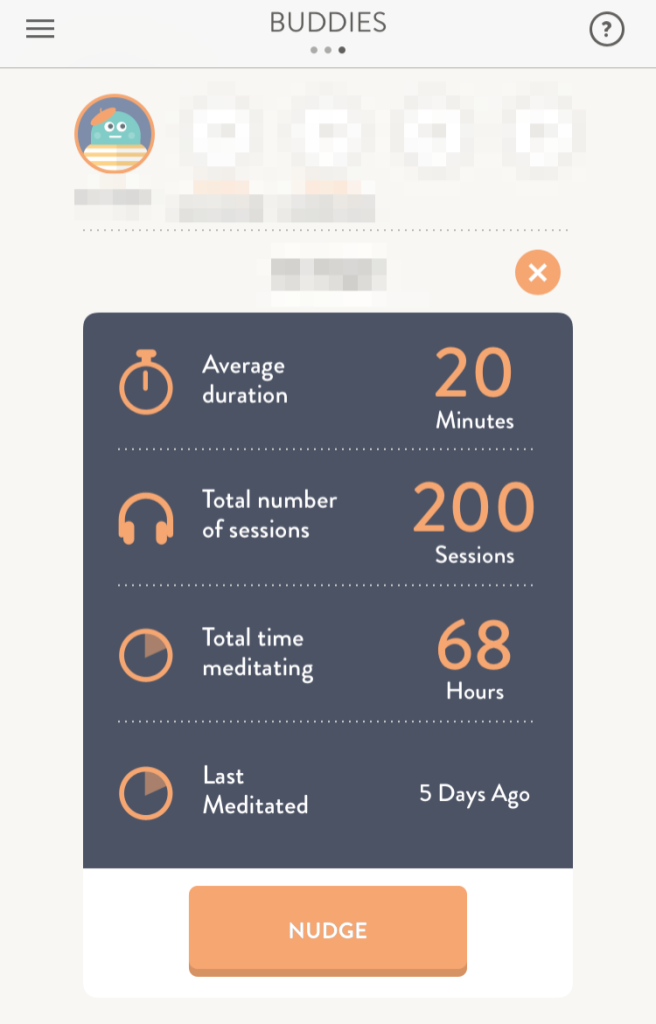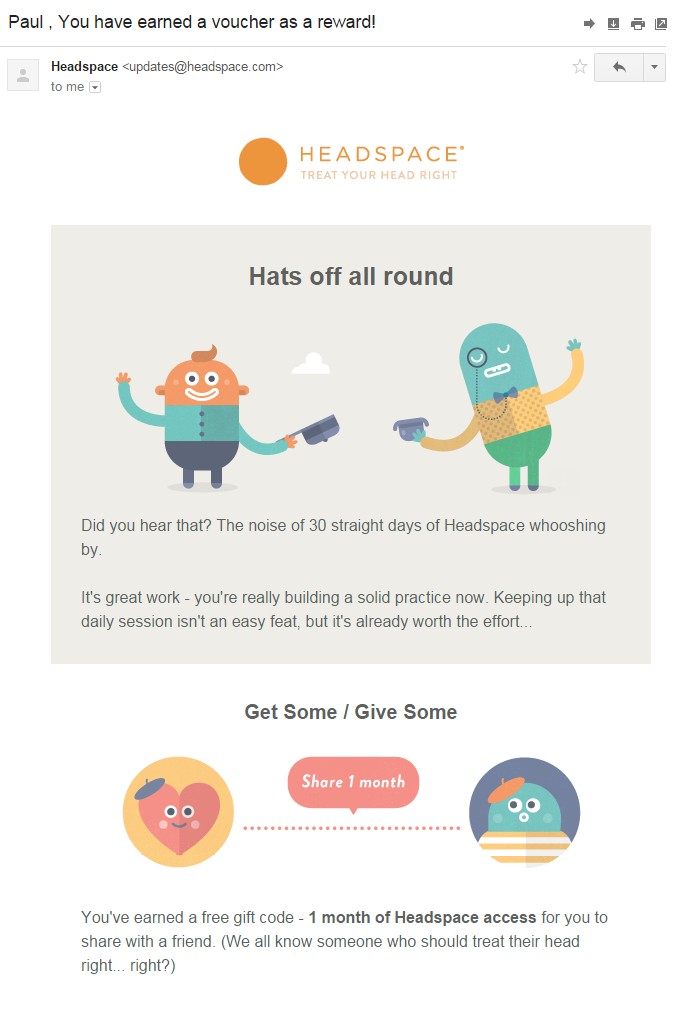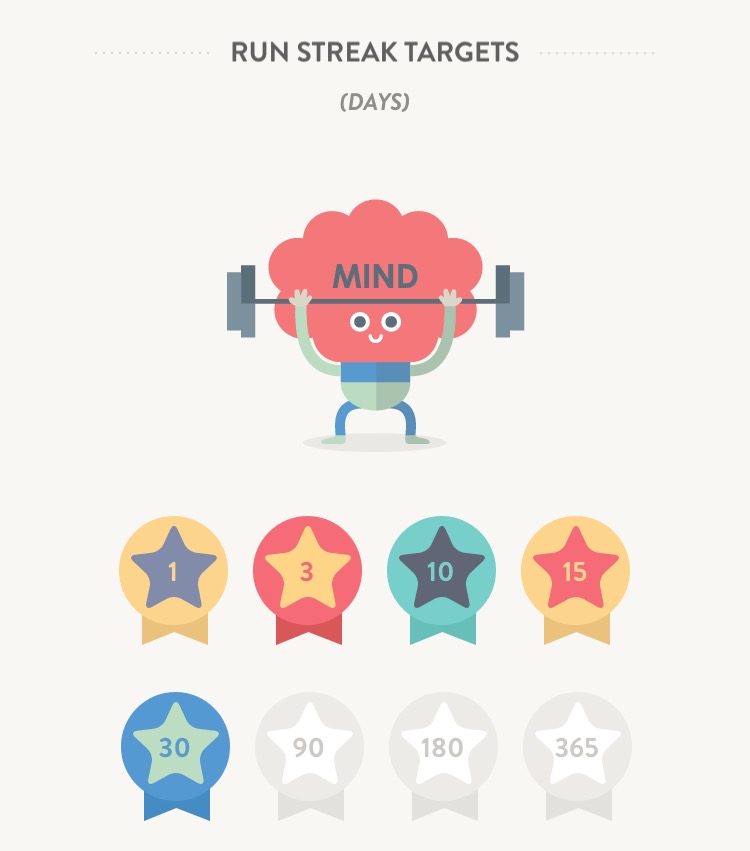Like most health and wellness habits, meditation has challenging behavioral characteristics:
- Requires a meaningful time commitment (10-30 minutes) and considerable consistency (daily)
- Requires a specific environment (uninterrupted, quiet, sitting, eyes closed)
- Yields long-term benefits (6+ months) with the potential for no appreciable short term gains
Many wellness apps use behavior design tactics to help overcome these barriers, but few are contextual to the nuances of the target behavior. In this regard, the popular freemium meditation app Headspace stands out in its thoughtful use of social behavior design. I’ll highlight three areas where Headspace excels and provide one recommendation for improvement.
1. A Leaderless Leaderboard
Meditation should be autotelic — done for its own sake. A gamified, badge-laden, points-driven, force-ranked leaderboard would likely be corrosive to meditation. However, if Headspace didn’t use any social features, its users would miss out on the benefits of peer accountability. Headspace strikes the right balance with a low fidelity and non-competitive “buddy” feature.
| Traditional Approach | Headspace Approach | Benefit |
| Avatars are self-selected photos | Avatars are friendly illustrations | Reduces psychological identifiability by adding distance between you and your buddies. This likely reduces the competitive drive (i.e., seeing your friend’s photo might make you want to compete with her, but it’s hard to feel competitive when you’re looking at her smiling avatar). |
| Add an unlimited number of friends through social media platforms | Add up to 5 “buddies” by email only | Incentivizes you to only add your closest companions. Meditating daily would be a lot of work to show off to just a few people, if that were your goal. |
| Friends (competitors!) are listed in rank-order, often with multiple metrics | Buddies are displayed horizontally. When you click on an avatar, you can only see a few metrics, such as the last time that person meditated. | Minimizes competitive atmosphere and prevents showmanship. You only know enough to check in and see how your buddies are doing. |
| Post comments and emoticons on a feed of activities | Nudge a buddy via text or email | Minimizes social praise or guilt as an extrinsic motivator for meditation. |

2. Subtle Social Proof
When you swipe right from the main meditation tab, you’re taken to a screen that displays your progress. Beneath your meditation statistics, the app displays the number of people meditating right now. This number is a startling reminder that at this very moment, thousands of people are actually meditating. The number is small and dynamic enough to feel credible, but substantial enough to make you feel like you’re part of a larger community with a shared experience.

If you are trying to procrastinate, that number immediately encourages you to start meditating. If you just finished meditating, it’s a subtle congratulations for joining thousands of like-minded individuals. This is a powerful way to reinforce a habit that requires persistence in light of the fact that it yields few short-term benefits.
3. Non-Instrumental Social Rewards
Many apps incentivize the primary user for achieving the target behavior (e.g., mayorships in Foursquare/Swarm). However, providing users with an instrumental reward will likely undermine their intrinsic motivation. There’s a large body of literature suggesting that incentivizing an intrinsically-motivated behavior (e.g., helping a neighbor lift some heavy boxes out of a desire to be a nice person) with an extrinsic reward (e.g., $5) degrades performance. In the Headspace context, you don’t want to directly incentivize habitual meditators by giving them benefits that are instrumentally valuable. Headspace thoughtfully addresses this tension by rewarding meditators who achieve 15 or 30 day streaks with a free 15 or 30 day voucher that they can only share with a friend. Since the meditator can’t use the voucher for his own account, Headspace rewards the target behavior without corrupting the motivation, and potentially generates a referral in the process.
It is also important for users to only associate the Headspace app with the target behavior of meditation. Headspace deftly preserves the sanctity of the app by delivering the 30 day voucher code via email, which further distances the meditation experience from any incentives.

What I’d Change: Streaks
Rewarding streaks is a powerful method to encourage consistent habits. Unfortunately, streaks ignore the reality that life happens — flawless daily habits are nearly impossible. Even the most dedicated flossers, exercises, or meditators simply miss a day every once in a while.

In a behavior design context, rewarding long streaks is dangerous for two reasons:
- You incentivize cheating. If it’s nearing midnight and you just realized that you didn’t meditate, you might convince yourself that it’s okay to meditate while brushing your teeth.
- You risk demotivating users when they break long streaks. Prospect theory reminds us that losses loom larger than gains. When you break a long streak, everything you worked on so hard now feels like it’s thrown out the window because you forgot to meditate for just one day. I bet that a person who breaks a 90 day streak will be subsequently much less active than someone who only ever achieves 15 or 30 day streaks.
As a result, I’d encourage Headspace to only reward streaks of up to 30 or 60 days. You can reward 120 or 365 day streaks through surprise emails, but building it into the game dynamics distorts the core incentives.
Concluding Thoughts
Thoughtful behavior design can’t be copied. What works in one context could backfire in another. The tactics I’ve highlighted may be uniquely beneficial to Headspace given the nature of the target behavior. For example, you might want robust leaderboards when trying to encourage people to lose weight. As designers of behavior, whether for ourselves or others, we must first consider the context and then build to the design.
Happy meditating!